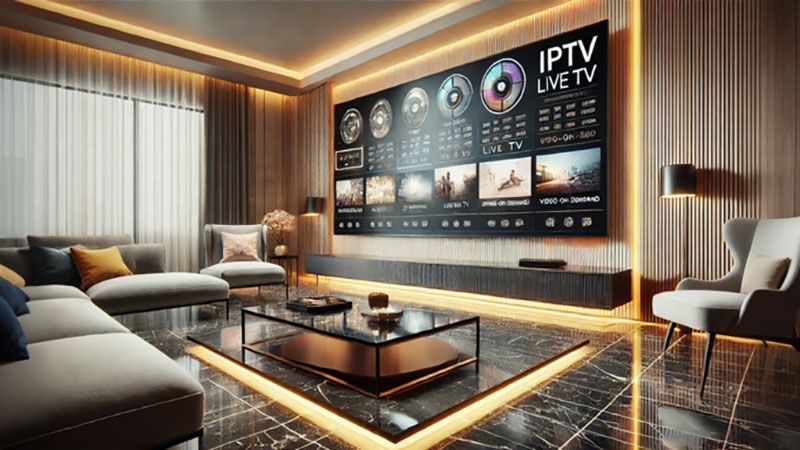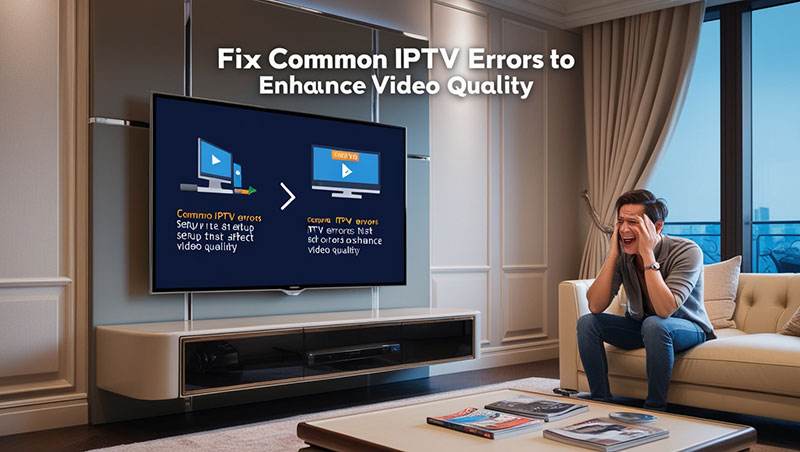Common IPTV Setup Errors That Affect Video Quality
In the age of digital streaming, Internet Protocol Television (IPTV) has emerged as a popular choice for viewers seeking a diverse range of channels and on-demand content. However, many users encounter issues that can significantly affect their viewing experience. Understanding common IPTV setup errors is crucial for ensuring optimal video quality. In this article, we will explore these errors and provide solutions to enhance your IPTV experience.
1. Poor Internet Connection
The Issue
One of the most common errors affecting IPTV video quality is a poor internet connection. IPTV relies heavily on a stable and fast internet connection to deliver high-quality video streams. If your internet speed is slow or inconsistent, you may experience buffering, pixelation, or even complete loss of service.
Solution
To resolve this issue, conduct a speed test to check your internet speed. Ideally, you should have a minimum download speed of 10 Mbps for standard definition (SD) and at least 25 Mbps for high definition (HD) streaming. If your speed is below these thresholds, consider upgrading your internet plan or troubleshooting your network.

2. Incorrect IPTV Settings
The Issue
Incorrect settings in your IPTV application can lead to subpar video quality. This includes misconfigured video resolution, codec settings, or streaming protocols.
Solution
Review the settings in your IPTV app. Ensure that the video resolution matches your device’s capabilities and that the correct codec is selected. Most IPTV applications allow you to adjust these settings in the preferences or settings menu. If you’re unsure, consult the user manual or online support for your specific IPTV service. Softwares you need for watching IPTV
3. Outdated Software
The Issue
Using outdated software can lead to compatibility issues and bugs that affect video quality. This includes your IPTV application, device firmware, and even your router’s firmware.
Solution
Regularly check for updates for your IPTV application and device firmware. Most devices will notify you of available updates, but you can also manually check in the settings menu. Keeping your software up to date ensures you have the latest features and bug fixes, which can improve video quality.
4. Network Congestion
The Issue
Network congestion occurs when multiple devices are using the same internet connection simultaneously, leading to reduced bandwidth for each device. This can result in buffering and degraded video quality.
Solution
To mitigate network congestion, try to limit the number of devices connected to your network while streaming. If possible, connect your streaming device directly to the router via an Ethernet cable for a more stable connection. Additionally, consider scheduling heavy internet usage (like downloads or online gaming) for times when you are not streaming.
5. Firewall and Security Settings
The Issue
Firewalls and security settings on your router or device can block IPTV streams, leading to interruptions and poor video quality. This is particularly common with certain security software that may mistakenly identify IPTV traffic as a threat.
Solution
Check your firewall and security settings to ensure that they are not blocking your IPTV service. You may need to whitelist your IPTV application or adjust your router’s settings to allow for smoother streaming. Consult your router’s manual for instructions on how to modify these settings.
6. Incompatible Devices
The Issue
Not all devices are compatible with every IPTV service. Using an incompatible device can lead to performance issues, including poor video quality.
Solution
Before subscribing to an IPTV service, check the list of compatible devices. If your device is not supported, consider using a different device or a streaming box that is known to work well with your chosen IPTV service.
7. Server Issues
The Issue
Sometimes, the problem lies with the IPTV service provider itself. Server overload or maintenance can lead to poor video quality or interruptions in service.
Top Recommendation:
Discover the ultimate entertainment solution with 7 Days GenIPTVPro Subscription, designed just for you.
Solution
If you suspect server issues, check the provider’s website or social media channels for any announcements regarding outages or maintenance. If the problem persists, consider reaching out to customer support for assistance.
Conclusion
IPTV offers a fantastic way to enjoy a wide range of content, but setup errors can significantly impact video quality. By understanding and addressing these common issues—such as poor internet connections, incorrect settings, outdated software, network congestion, firewall settings, incompatible devices, and server problems—you can enhance your IPTV experience. With the right setup and troubleshooting, you can enjoy seamless streaming and high-quality video content.
Additional Tips for Optimal IPTV Experience
- Use a Wired Connection: Whenever possible, connect your streaming device directly to your router with an Ethernet cable for a more stable connection.
- Optimize Your Wi-Fi: If using Wi-Fi, ensure your router is placed in a central location and consider upgrading to a dual-band router for better performance.
- Monitor Your Bandwidth: Use bandwidth monitoring tools to keep track of your internet usage and identify any devices that may be hogging bandwidth.
By following these guidelines, you can enjoy a smoother and more enjoyable IPTV viewing experience.
